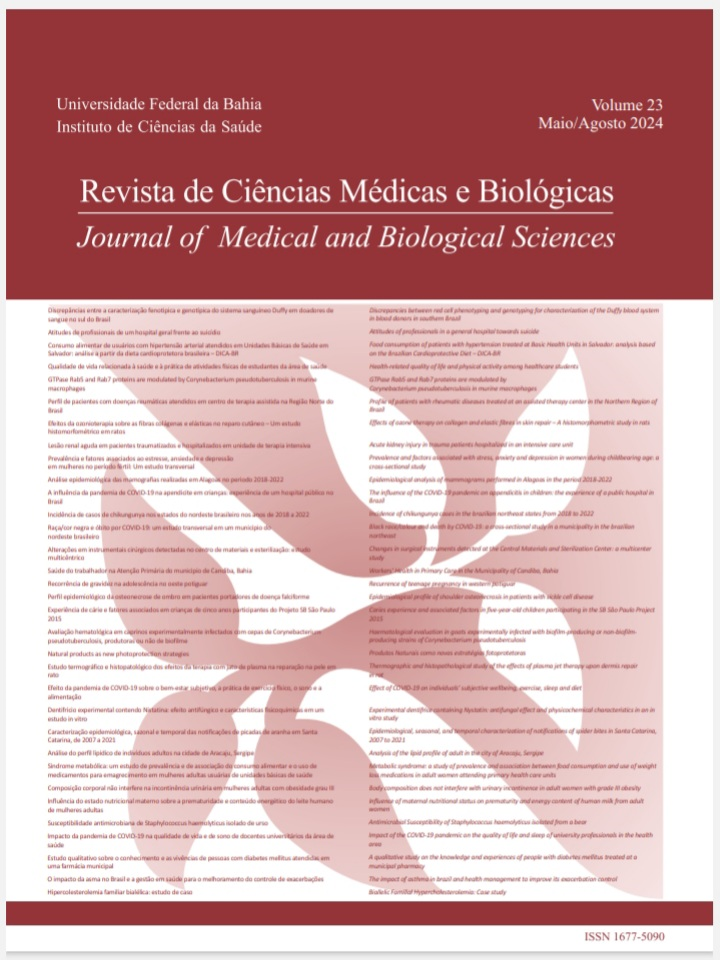Consumo alimentar de usuários com hipertensão arterial atendidos em Unidades Básicas de Saúde em Salvador: análise a partir da dieta cardioprotetora brasileira – DICA-BR
DOI:
https://doi.org/10.9771/cmbio.v23i2.64116Palavras-chave:
Ingestão alimentar; Hipertensão arterial sistêmica; Doenças crônicas; Unidade Básica de Saúde; DietaResumo
Resumo
Introdução a hipertensão arterial sistêmica (HAS) aumenta o risco de derrames e de ataques cardíacos. Entre os fatores de risco
modificáveis, está o hábito alimentar. Assim, a Dieta Cardioprotetora Brasileira (DICA-BR) propõe hábitos alimentares saudáveis para
o controle da HAS. Objetivo avaliar o perfil do consumo alimentar de usuários com hipertensão atendidos em Unidades Básicas
de Saúde (UBS), com base nas recomendações da DICA-BR. Material e métodos trata-se de um estudo transversal, conduzido em
Salvador com 170 homens e mulheres hipertensos (≥ 140 mmHg ou ≥ 90mmHg), com idade ≥ 20 anos. A DICA-BR categoriza os
alimentos por cores da bandeira brasileira, recomendando porções/dia, por grupo/cor: 12 verdes; 10 amarelos; 3 azuis; e nenhum
vermelho. O estudo foi aprovado pelo Comitê de Ética da UNEB, sob número 43203121.5.3005.5662. Resultados entre os participantes,
observou-se prevalência do sexo feminino (81,8%), negros (91,2%), renda de ½ a 2 salários mínimos (67,1%), adultos (55,9%), com
grau de instrução ensino médio completo ou superior incompleto (27,1%). Quanto ao perfil do consumo alimentar, eles não atingiram
a recomendação de consumo de alimentos: 17 verdes (20,2%); 16 amarelos (22,9%); 19 azuis (90,5%); e 13 vermelhos. Somente
pessoas brancas atingiram o consumo de 100% no grupo azul. A maior ingestão de alimentos do grupo vermelho (ultraprocessados)
foi observada em pessoas sem renda (38 porções). Conclusão os participantes não atingiram a recomendação de ingestão na maioria
dos grupos alimentares da DICA-BR, exceto para pessoas brancas no grupo cor azul, e se observou alto consumo de ultraprocessados.
Downloads
Downloads
Publicado
Como Citar
Edição
Seção
Licença
Copyright (c) 2024 Revista de Ciências Médicas e Biológicas

Este trabalho está licenciado sob uma licença Creative Commons Attribution 4.0 International License.
A Revista de Ciências Médicas e Biológicas reserva-se todos os direitos autorais dos trabalhos publicados, inclusive de tradução, permitindo, entretanto, a sua posterior reprodução como transcrição, com a devida citação de fonte. O periódico tem acesso livre e gratuito.






